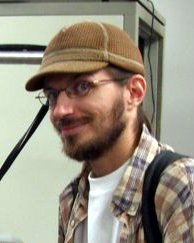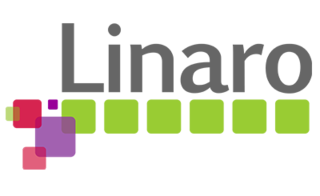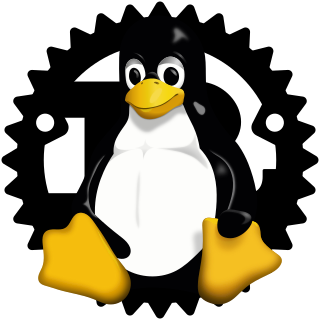Syzkaller is a software fuzzing framework that has been used for fuzzing the Linux kernel. It also supports other kernels. [1] [2]
As of 2021, the Syzkaller dashboard showed hundreds of bugs in the Linux kernel. [3]
Syzkaller is a software fuzzing framework that has been used for fuzzing the Linux kernel. It also supports other kernels. [1] [2]
As of 2021, the Syzkaller dashboard showed hundreds of bugs in the Linux kernel. [3]

LWN.net is a computing webzine with an emphasis on free software and software for Linux and other Unix-like operating systems. It consists of a weekly issue, separate stories which are published most days, and threaded discussion attached to every story. Most news published daily are short summaries of articles published elsewhere, and are free to all viewers. Original articles are usually published weekly on Thursdays and are available only to subscribers for two weeks, after which they become free as well. LWN.net is part of Eklektix, Inc.

David Stephen Miller is an American software developer working on the Linux kernel, where he is the primary maintainer of the networking subsystem and individual networking drivers, the SPARC implementation, and the IDE subsystem. With other people, he co-maintains the crypto API, KProbes, IPsec, and is also involved in other development work.

A free and open-source graphics device driver is a software stack which controls computer-graphics hardware and supports graphics-rendering application programming interfaces (APIs) and is released under a free and open-source software license. Graphics device drivers are written for specific hardware to work within a specific operating system kernel and to support a range of APIs used by applications to access the graphics hardware. They may also control output to the display if the display driver is part of the graphics hardware. Most free and open-source graphics device drivers are developed by the Mesa project. The driver is made up of a compiler, a rendering API, and software which manages access to the graphics hardware.
seccomp is a computer security facility in the Linux kernel. seccomp allows a process to make a one-way transition into a "secure" state where it cannot make any system calls except exit , sigreturn , read and write to already-open file descriptors. Should it attempt any other system calls, the kernel will either just log the event or terminate the process with SIGKILL or SIGSYS. In this sense, it does not virtualize the system's resources but isolates the process from them entirely.
Crypto API is a cryptography framework in the Linux kernel, for various parts of the kernel that deal with cryptography, such as IPsec and dm-crypt. It was introduced in kernel version 2.5.45 and has since expanded to include essentially all popular block ciphers and hash functions.
The device mapper is a framework provided by the Linux kernel for mapping physical block devices onto higher-level virtual block devices. It forms the foundation of the logical volume manager (LVM), software RAIDs and dm-crypt disk encryption, and offers additional features such as file system snapshots.

Kernel-based Virtual Machine (KVM) is a free and open-source virtualization module in the Linux kernel that allows the kernel to function as a hypervisor. It was merged into the mainline Linux kernel in version 2.6.20, which was released on February 5, 2007. KVM requires a processor with hardware virtualization extensions, such as Intel VT or AMD-V. KVM has also been ported to other operating systems such as FreeBSD and illumos in the form of loadable kernel modules.

The Completely Fair Scheduler (CFS) is a process scheduler that was merged into the 2.6.23 release of the Linux kernel and is the default scheduler of the tasks of the SCHED_NORMAL class. It handles CPU resource allocation for executing processes, and aims to maximize overall CPU utilization while also maximizing interactive performance.
aufs implements a union mount for Linux file systems. The name originally stood for AnotherUnionFS until version 2.

The Linux kernel is a free and open-source, monolithic, modular, multitasking, Unix-like operating system kernel. It was originally authored in 1991 by Linus Torvalds for his i386-based PC, and it was soon adopted as the kernel for the GNU operating system, which was written to be a free (libre) replacement for Unix.

Linux Containers (LXC) is an operating-system-level virtualization method for running multiple isolated Linux systems (containers) on a control host using a single Linux kernel.
cgroups is a Linux kernel feature that limits, accounts for, and isolates the resource usage of a collection of processes.

Linaro is an engineering organization that works on free and open-source software such as the Linux kernel, the GNU Compiler Collection (GCC), QEMU, power management, graphics and multimedia interfaces for the ARM family of instruction sets and implementations thereof as well as for the Heterogeneous System Architecture (HSA). The company provides a collaborative engineering forum for companies to share engineering resources and funding to solve common problems on ARM software. In addition to Linaro's collaborative engineering forum, Linaro also works with companies on a one-to-one basis through its Services division.
ftrace is a tracing framework for the Linux kernel. Although its original name, Function Tracer, came from ftrace's ability to record information related to various function calls performed while the kernel is running, ftrace's tracing capabilities cover a much broader range of kernel's internal operations.
A virtual kernel architecture (vkernel) is an operating system virtualisation paradigm where kernel code can be compiled to run in the user space, for example, to ease debugging of various kernel-level components, in addition to general-purpose virtualisation and compartmentalisation of system resources. It is used by DragonFly BSD in its vkernel implementation since DragonFly 1.7, having been first revealed in September 2006, and first released in the stable branch with DragonFly 1.8 in January 2007. The long-term goal, in addition to easing kernel development, is to make it easier to support internet-connected computer clusters without compromising local security. Similar concepts exist in other operating systems as well; in Linux, a similar virtualisation concept is known as user-mode Linux; whereas in NetBSD since the summer of 2007, it has been the initial focus of the rump kernel infrastructure.
EROFS is a lightweight read-only file system initially developed by Huawei for the Linux kernel.
This article documents the version history of the Linux kernel. The Linux kernel is a free and open-source, monolithic, Unix-like operating system kernel. It was conceived and created in 1991 by Linus Torvalds.
Retbleed is a speculative execution attack on x86-64 and ARM processors, including some recent Intel and AMD chips. First made public in 2022, it is a variant of the Spectre vulnerability which exploits retpoline, which was a mitigation for speculative execution attacks.

Rust for Linux is a series of patches to the Linux kernel that adds Rust as a second programming language to C for writing kernel components.
The Industrial Input/Output Framework is a part of the Linux kernel.